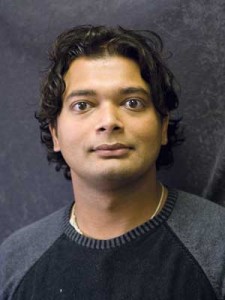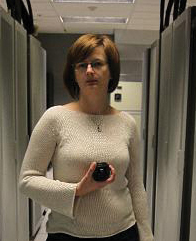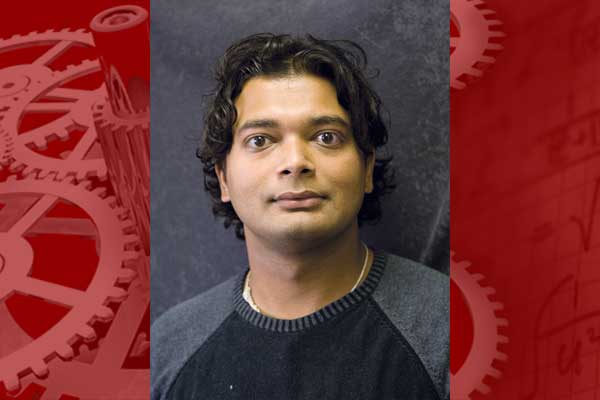
Integrating computational thinking with experimental analysis in renewable energy research, Baskar Ganapathysubramanian, assistant professor of mechanical engineering, is focused on designing better organic solar cells.
The computational tools he is developing will help classify and characterize the way the plastic thin film cells respond to different conditions and configurations. He explains that doing this work computationally cuts down on the wide range of experiments that need to be run, allowing for a more systematic approach to understanding how to make the cells more efficient.
A $400,000 National Science Foundation CAREER award is supporting Ganapathysubramanian’s project “A predictive modeling framework for exploring process-structure-property relationships in organic solar cells.”
Research on organic solar cells has taken off over the past decade because of the affordability of the technology compared to silicon-based solar cells. Plastic cells can be produced at a fraction of the cost of their silicon counterparts. They are flexible and produced on a rolling mat, and when used as a coating for surfaces, they can harness energy for everything from operating a laptop to cooling a home.
Ganapathysubramanian describes the way the key component of plastic solar cells are made as similar to painting a wall.
“There are two materials (polymers or plastics) that perform different duties,” he said. “One absorbs sunlight and creates charges (called the donar), while the other (called the acceptor) helps transport the charges to the electrode.”
The materials are mixed together, dissolved in a solvent (just like in house-hold paint), and then coated on a surface. “As the solvent evaporates out, it creates a thin layer of solar cells,” he explained. “The process is exactly like the volatile solvent evaporating from the paint to leave behind the colored residue on your wall.”
Researchers in the field initially focused on developing the best material for the cells, but they soon realized how the cells are manufactured plays an important role in the efficiency of the cells. “We’re now looking at answering questions like what’s the optimal weight for material A and material B, what’s the best way to mix them, what solvent do you use, and how do you coat it,” Ganapathysubramanian said.
His project will model and simulate the fabrication process of thin film solar cells. Using computations allows Ganapathysubramanian to go through hundreds of thousands of formulations in a few weeks time compared to experimentalists trying out formulations one at a time.
To create the models, his research group has been working to understand what drives the process. Using simple conservation laws, principals of thermodynamics, and phase separation theories, the team develops equations to discover the rate at which the material properties and distribution is changing.

Olga Wodo, a postdoctoral research associate in Ganapathysubramanian’s group, has been developing methods that are allowing the group to solve these sorts of equations over an extended period of time. The process involves tracking the evolution of the materials every millisecond (or smaller) for at least an hour.
“The techniques Dr. Wodo has created, combined with the high performance computers at Iowa State, are allowing us to do what has never been possible in the field,” said Ganapathysubramanian.
For this project, Ganapathysubramanian has partnered with assistant electrical engineering professor Sumit Chaudhary, who received a CAREER award in 2011 to improve organic solar cells. He also works researchers at the King Abdullah University of Science and Technology in Saudi Arabia. “It’s important to have partners who are on the experimental side of a project,” said Ganapathysubramanian. “We are going to see more of these sorts of partnerships as science and engineering begin to see the advantages of modeling complex technologies.”
The project also features an educational/outreach component that will emphasize the importance of using computational resources and how the technologies can advance renewable energy. These lessons will be integrated into courses at different collegiate levels in addition to several activities at the K-12 level, including a “NanoDays” event at the Science Center of Iowa and a simulation of computational data displayed at the Virtual Reality Applications Center on campus.
